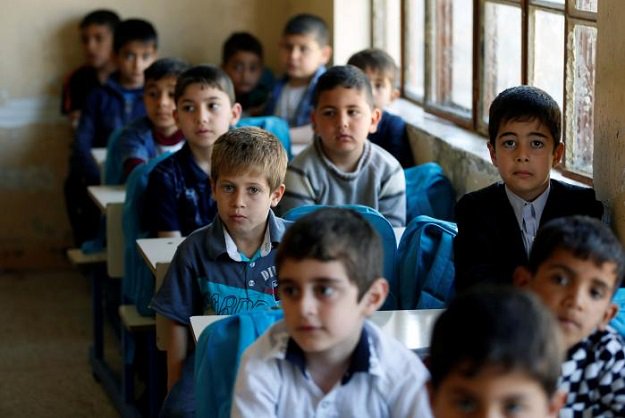
The survey said that out of the sample of population it selected for its study, it found 87% children aged 6-16 enrolled in schools as compared to 86% in 2016; there is good news for quality too!, said the ASER press release.
These findings were made public in the report of Pakistan’s largest-annual citizen-led household based ASER Survey 2018 – the eighth ASER Survey Khyber Pakhtunkhwa report– launched in Peshawar on Thursday.
The Annual Status of Education Report (ASER) is the largest citizen led; household based initiative that aims to provide reliable estimates on the schooling status of children aged 3-16 years residing in all rural and few urban districts of Pakistan.
ASER is managed by Idara-e-Taleem-o-Aagahi (ITA) in partnership with eight key civil society and partner bodies including the Khapal Khor Organisation, Bakar, Organisation for Legal and Social Services, Community Research and Development Organisation, Sawera Development Organisation, Development Concerns, Khushboo Development Organisation, Community Motivation and Development Organisation.
The report said that at least 1,500 educated volunteers trained as enumerators visited 733 villages in 25 districts. They gathered information from 14,583 households and 41,912 children of age 3-16 years. For the year 2018, the ASER K-P rural survey assessed 31,189 children of 5-16 year age cohort in Language (Urdu/Pashto), English, and arithmetic competencies.
The report aims to highlight progress and continued challenges with respect to Article 25 A of the constitution making education a fundamental right for 5-16 year old children since 2010 and also for tracking progress towards SDG 4 measuring learning outcomes at the lower primary level.
Access
Proportion of out-of-school children has improved marginally compared to 2016, with 13% children still not going to school. This is good news as the SDG 4 goal and targets have been fully endorsed by the federal and provincial governments aligning their sector plans to the promise made both for SDG 4 (12 years of schooling) and Article 25 A (the right to education of 5-16 year old). K-P has recorded overall a 1% increase in enrolment. Nationally, the gender gap persists in out-of-school children with more girls than boys not being enrolled or dropped out of school. The percentage of girls who are out of school is still more than the percentage of boys.
In ASER 2018 amongst the 13% out-of- school children (age 6-16 years), 8% are girls and 5% are boys. There is slight significant improvement in this gap as compared to ASER 2016 (5% males and 9% females). The report urged the people to commit that no girls be left behind for quality education!
Early Childhood Education
Early Childhood Education has also been historically tracked by ASER. From 2014 when ECE enrolment was recorded at 38%, rising up to 40% in 2015, declining to 36% in 2016, and declining again to 30% in 2018 in rural KP. Overall, government schools have witnessed a surge of 11% (67%) in enrolment for ECE, whereas private sector holds 33% of total enrolment. The foundational learning stage for lifelong learning needs urgent attention and resources for implementation.
Quality
ASER is a citizen led learning accountability movement for tracking learning. Learning in ASER 2018 reveals better trends in improved student competencies in Language, English and Arithmetic. 58% class five children could read a class two level story in Urdu/Pashto compared to 45% in 2016. In English, 55% class five children could read sentences (class 2 level) compared to 43% in 2016. For Arithmetic, 69% class five children could do two-digit division in 2018 compared to 44% in 2016.
Public-Private Learning Gap
The ASER Survey 2018 highlights as per past trends that children enrolled in private schools are performing better compared to those studying in government schools. 64% children enrolled in Class-V in private schools were able to read a story in Urdu/Pashto compared to 56% Class V students studying at government schools.
Published in The Express Tribune, March 22nd, 2019.



1732105641-0/BeFunky-collage-(78)1732105641-0-165x106.webp)







COMMENTS
Comments are moderated and generally will be posted if they are on-topic and not abusive.
For more information, please see our Comments FAQ